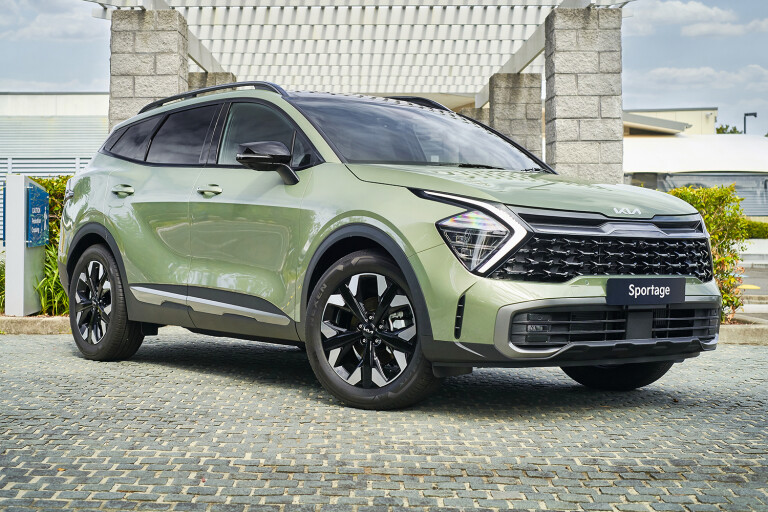
Things we like
- GT-Line's upmarket vibe
- Big jumps for interior space and equipment
- Addition of 1.6L turbo engine
Not so much
- Prices will increase
- Wireless phone charging still limited to GT-Line
- Underwhelming 2.0L petrol still being offered
When you’re invited to get up close and personal with the 2022 Kia Sportage, you don’t turn it down – even if there’s no driving opportunity yet with the official launch still weeks away.
That’s not simply because we like to think we’re a polite bunch here at Wheels; the Sportage is the second most popular Kia in Australia, and it competes in the country’s second most popular segment.
This new, fifth-generation midsize-SUV must take on key rivals including the Toyota RAV4, Mazda CX-5, Subaru Forester, and its cousin, the Hyundai Tucson.
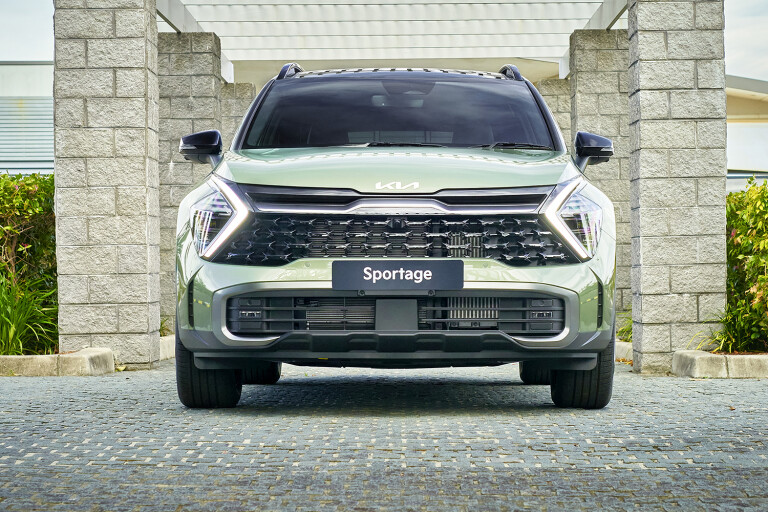
Like the Tucson, the Sportage has gone for its boldest and maturest design yet (even if some might say that’s not much of an achievement considering some of its frumpy-looking predecessors).
Aside from looking more substantial than the outgoing model purely through larger dimensions that see the Kia SUV grow nearly 17cm in length, the Sportage’s front end sports striking boomerang-style LED daytime running lights.
For the range-topping GT-Line we’re specifically looking at, it gains dual LED headlights and full LED tail-lights over the rest of the line-up that have single-lamp LEDs up front and partial-LED rear lamps.
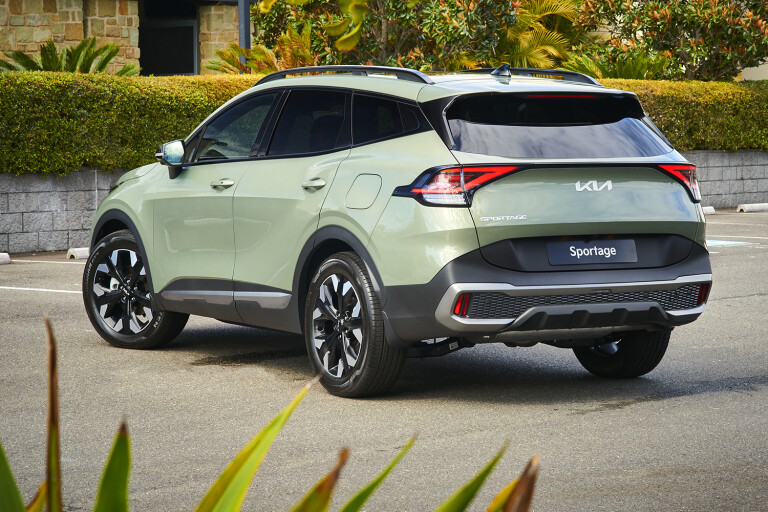
It shares 19-inch wheels with the SX+, though features differently styled, machined-alloy rims. The base Sportage, the S, gets 17-inch wheels and the next-up SX has 18-inch wheels.
At the rear, the ‘Razor’ tail-lights live up to their name with their sharply profiled design, and there’s also the new-look Kia logo.
The 2022 GT-Line also looks good in Jungle Wood Green – one of several new exterior colours available, along with Fusion Black, Vesta Blue and Dawning Red.
Clear White is the standard paint, with other metallic options Steel Grey and Snow White Pearl. (Jungle Wood Green and Snow White Pearl aren’t available for the entry-level Sportage.)
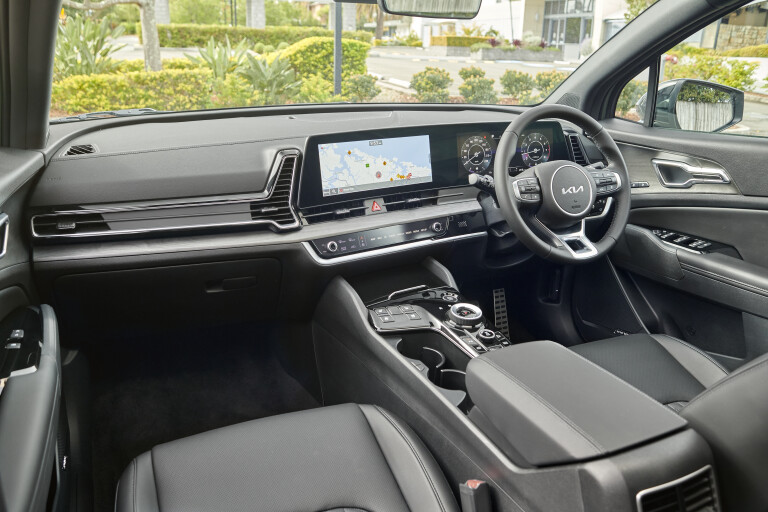
Stepping inside, the Sportage has taken a clear move upmarket – following Kia’s larger SUV, the Sorento.
Hard plastics commonly associated with mainstream vehicles certainly still exist, but a combination of smartly executed design details and plentiful soft-touch trim markedly improve the perception of quality.
This could be potentially lifted further with a classy-looking blue/white dual-tone interior trim (see the gallery in our initial reveal story here). This is being considered for Australia, though from launch the Sportage will stick to what is something of a Kia tradition with an all-black cabin.
The GT-Line’s interior looks particularly semi-premium with a couple of key range-exclusive features.
It’s the only Sportage with a fully flat centre console, taking advantage of shift-by-wire technology to present a rotary transmission dial where other models utilise a regular gear-lever.
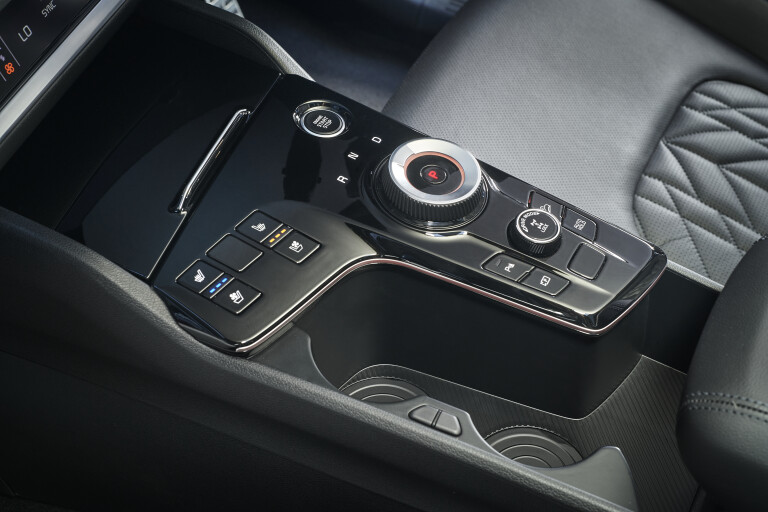
The L-shaped console is also smartly finished in gloss-black plastic and accommodates another smaller dial for driving modes, engine start/stop, and seat ventilation (GT-Line only) and heating (SX+ and GT-Line)
And the GT-Line alone features a curved fully digital display that dominates the dash and comprises a central infotainment touchscreen and instrument cluster – both 12.3 inches in size. (The bendy, panoramic arrangement also helps distinguish it from the similar set-up found in many Mercedes-Benz models.)
Sportage grades below get a straighter display and less advanced digital driver display. Sportage S buyers get a smaller, 8.0-inch infotainment touchscreen.
Kia has also created a fantastically clever functions panel for the centre of the dash. Mixing two physical dials with touch controls, the functions can be switched between climate and infotainment at the press of a button. The dials, for example, will either change cabin temperature for driver/front passenger (dual-zone in SX upwards) or adjust volume/tuning.
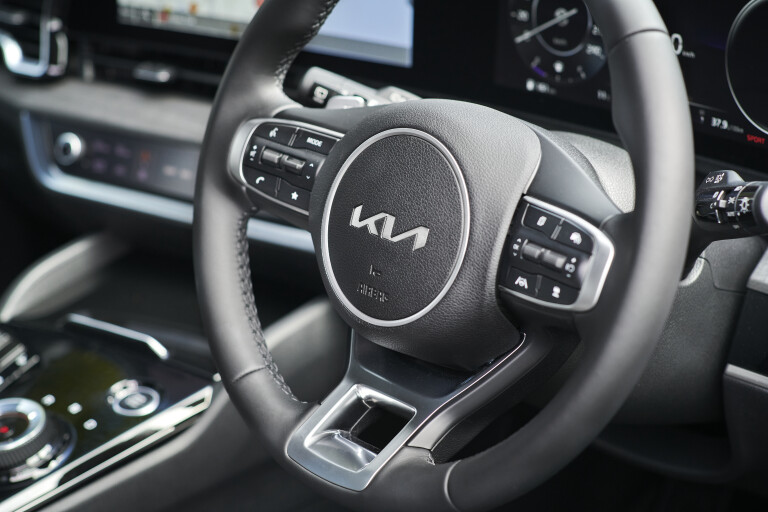
Kia’s Uvo telematics system – which allows a smartphone or smartwatch to remotely control some functions (climate, engine start, lock/unlock) and access certain vehicle information – is still under consideration for the Australian market.
Apple CarPlay and Android Auto smartphone mirroring is standard – requiring USB connection in SX, SX+ and GT-Line models but wireless in the S.
As with the outgoing generation, wireless smartphone charging is available only in the GT-Line spec, which continues to be disappointing for such a desirable feature.
The front door compartments are averagely sized, just about fitting a 500ml stainless-steel drinks bottle.
This GT-Line is a pre-production model that featured differently upholstered seats, which in showrooms will be full leather with suede uppers. Electric adjustment for the front seats will be standard, while the flagship Sportage will also come with a panoramic (dual pane) sunroof, LED interior lights, alloy sports pedals and ambient lighting.
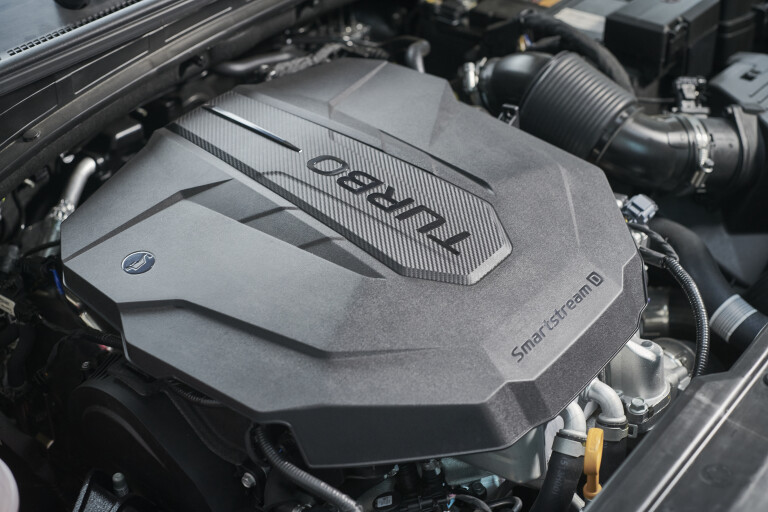
Extra technology will also include a 3D surround-view monitor, blind-spot video feed, and remote park assist (GT-Line diesel only).
With specifications revealed already ahead of the Sportage’s October release, we can report there will be significantly more standard equipment across the range. Prices, yet to be confirmed, can be expected to increase as well, just as they did with the cousin Tucson.
The increased length for the 2022 Kia Sportage, particularly the extra 8.5cm in the wheelbase, liberates extra space in the rear seat.
Where the outgoing Sportage was reasonably roomy for back-seat passengers, the fifth-generation model gains eight centimetres in legroom to be genuinely generous. Headroom also increases slightly.
Practical elements include bottle holders integrated into the rear doors, seatback pouches, centre armrest, USB ports in the sides of the front seats, and coat hooks – including large hooks on the top of the seatbacks that look like they have been designed to hold tablet devices. There are also rear vents.
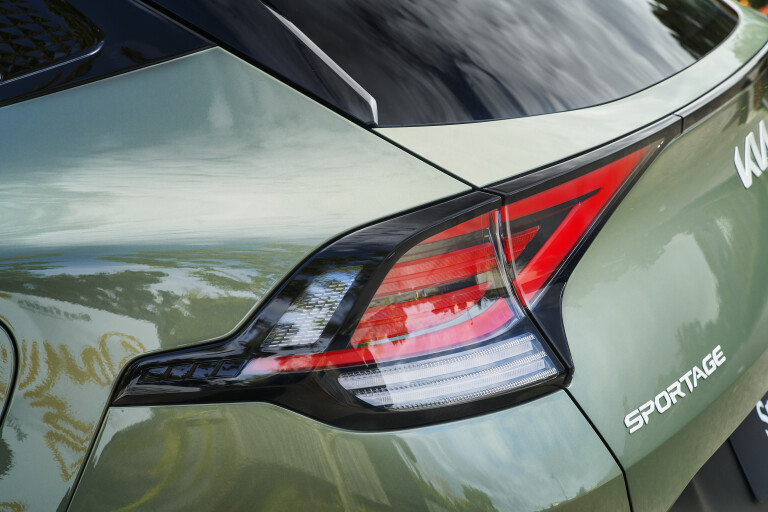
We can’t confirm at this stage whether all these features in the GT-Line model will apply to all grades.
Boot capacity has also to be confirmed for Australian-spec Sportages. A 637-litre figure was quoted for the 2022 model’s reveal, though a full-size spare wheel is standard on every model for the Australian market and is expected to reduce the volume slightly.
Regardless, the boot space looks undoubtedly larger compared with the luggage compartment of the outgoing Sportage that had an average-for-the-segment 466 litres.
It’s also more practical with features such a 12-volt socket and (from SX grades upward) release levers for the 60-40 folding rear seats.
A hands-free auto tailgate comes with SX+ and GT-Line variants.
Although we have yet to drive the 2022 Sportage, we can make a highly educated guess that the cheapest engine available – the carryover 2.0-litre petrol – will likely be one to avoid.
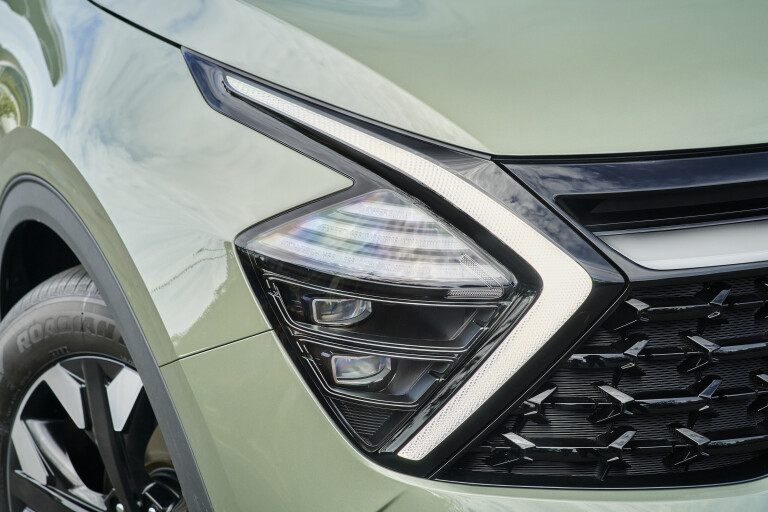
Offered as a choice on the S, SX and SX+ model grades, the 115kW/192Nm four-cylinder felt underpowered in the outgoing Sportage and isn’t great in the new Tucson. With its bigger size and extra features, the 2022 Sportage will inevitably be heavier than the model it replaces.
The availability of a manual gearbox for this engine is unlikely to help tempt many buyers, despite the slightly lower cost of entry.
Better news is that Kia’s 2.0-litre turbo diesel also carries over, delivering significantly more torque – 416Nm – than the petrol engines.
Kia Australia has also finally got its hands on the 1.6-litre turbocharged four-cylinder petrol that wasn’t available previously on the Sportage despite its inclusion on Hyundai’s Tucson.
We like this engine in the Seltos compact SUV (where it gets less power) as well as the Tucson, meaning it’s likely we won’t have to recommend a Sportage diesel only as before.
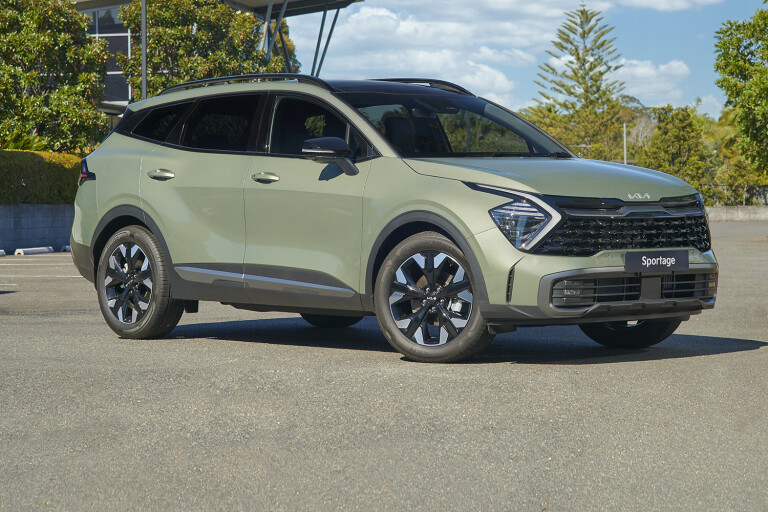
This 132kW/265Nm engine replaces the similarly underwhelming 2.4-litre petrol and is linked with a seven-speed dual-clutch auto where the 2.0L petrol features a six-speed auto and the 2.0L diesel is teamed with an eight-speed auto.
The turbo diesel and turbo petrol models are all-wheel drive; 2.0L petrol models are front-wheel drive.
Only the SX+ and GT-Line are offered with the turbo petrol.
Kia Australia expects these higher-spec Sportage models to be the most popular.
VERDICT: First impressions
While we need to acknowledge the GT-Line is the Sportage putting its best foot forward and need to wait to test the driving experience, there’s plenty about the Kia’s new-generation mid-sized SUV that bodes well.
Things we like
- GT-Line's upmarket vibe
- Big jumps for interior space and equipment
- Addition of 1.6L turbo engine
Not so much
- Prices will increase
- Wireless phone charging still limited to GT-Line
- Underwhelming 2.0L petrol still being offered



COMMENTS